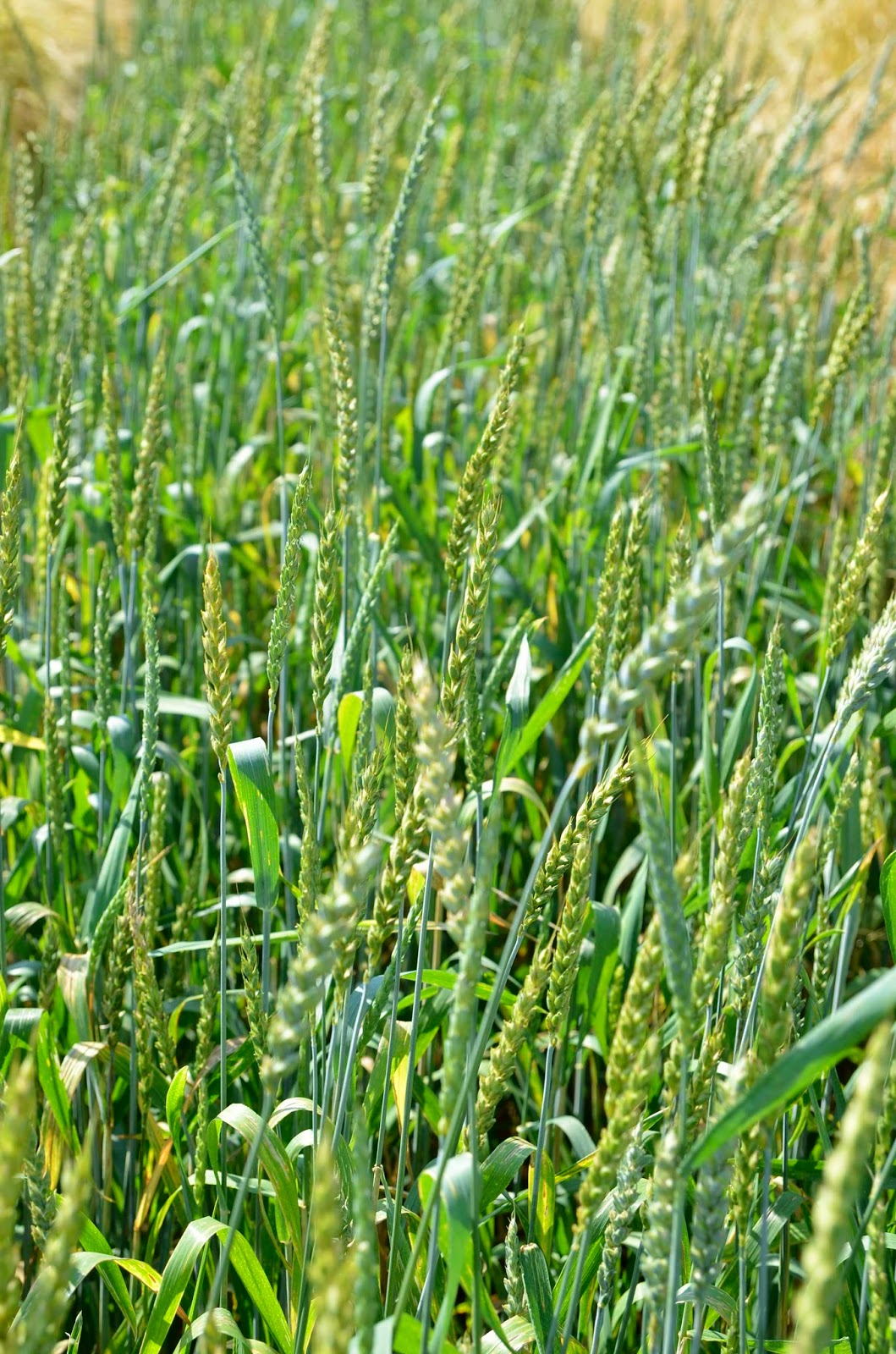Farming in 2046
The simple answer may be to say that there is no future for small family farms, Oak Farm will have been sold and amalgamated into a large, efficient arable unit, farmed by very few people and large machinery. Given present trends, this is the most likely outcome, but I'd like to present a more hopeful picture.
Here's what Elliot might be doing in 2046. Most of the ideas are other people's. I've just mashed them together in a flight of fancy.
The low-cost and reliable technology available to farmers in 2046 allows Elliot to work on a second job to bring in off-farm income. Technology, together with an agro-ecology approach to the whole farm system means that Elliot doesn't have to spend days driving a crop sprayer.
Oak Farm has returned to being a mixed farm, like it was in 1939 when Elliot's great-great-grandfather established the business. Grass leys were introduced to counter the pernicious weed black-grass and increase soil organic matter, and are grazed by a small herd of Lincoln Reds. Each animal has a tiny bio-sensor implanted under the skin (like microchip tags used on pets in 2016, but with much greater functionality) which report real time data on health and feed intake straight to Elliot's iphone 25. Grazing is managed using a mob grazing system with electric fences. The system uses feed intake data from the animals' bio-sensors, grass-level sensors in the paddock and weather data to monitor grass growth rates and automatically open the gates to move the mob onto the next paddock when needed.
This morning an alert on Elliot's phone indicates that an animal is lame and requires an injection. For this job there is no need to bring the animal into the crush as the injection can be administered using a dart. Elliot carefully stashes his air-rifle into his Landrover hybrid, which runs on bioethanol from straw or the battery charged from the solar panels on the shed roof. As he drives across the field the HUD (Head Up Display) identifies the animal in need of attention.
The crops grown include a number of grains, bred and grown for their nutritional properties, but above all, their flavour. Oak Farm's 'Wellingore Red' wheat has a considerable following in the artisan bakery world. The wheat is not a pure line variety as grown back in the 2010s but a resilient population, able to tolerate plant diseases. The reduction of the need for fungicides has brought an additional welcome benefit in that the straw breaks down quicker when returned to the soil after harvest and the mats of straw that once harboured slugs are a thing of the past.
There are actually two populations of Wellingore Red, one higher yielding and stiffer strawed for the heavier clays and another that is more reliable on the sandier parts due to its deeper roots. Both mature at the same time and have the same renown flavour. The type that is sown and the seed rate is varied across the field according to the soil map in the drill's management software. As the drill is a large, expensive piece of kit it is shared by several farms. Wheat is drilled mixed with a carefully chosen blend of clover, lucerne and medic as nitrogen-fixing companion plants.
Weeds are controlled by a small herd of weeder-bots. These work autonomously and continuously, roaming the fields and destroying weeds by burning their meristems with lasers or injecting a tiny dose of herbicide. They are sometimes guided to their work area by an agri-drone. This is a small blimp airship drone, solar-powered and able to stay aloft for long periods, shared by several farms in the parish. The weeder-bots have an extensive data-base of plant species, and leave alone non-competitive or high biodiversity value plants and manage weed populations to keep them below thresholds rather than eliminating them entirely. This greater plant diversity allows greater populations of beneficial insects such as hoverflies, largely eliminating the need for insecticides. The companion lucerne has also been genetically engineered to repel aphids from the fields.
Today, the reaper-bot is cutting Elliot's crop of high-beta-glucan naked barley. The reaper-bot is an autonomous machine based on the idea of the reaper-binder familiar to Elliot's great great grandfather. It cuts the corn and bundles it into sheaves, and unlike the old reaper-binder, it also props up groups of sheaves into stooks. At the same time as cutting, the reaper-bot broadcasts cover crop seed. Once the grain has dried in the stook the sheaves will be collected and threshed by the harvest-bot. Splitting the cutting and threshing functions of the 20th Century combine harvester between two machines allows smaller lighter machinery that causes less soil compaction. The naked barley will be used for porridge, marketed by a joint-venture company between a group of growers and a small processor to make sure everyone in the supply chain gets a fair share.
 |
| White spelt - one of the tasty grains that Oak Farm grows in 2046 |




















